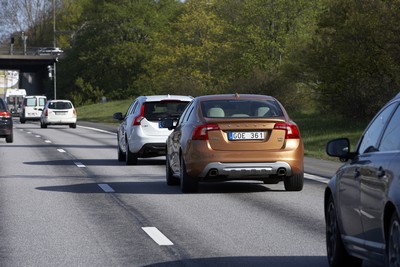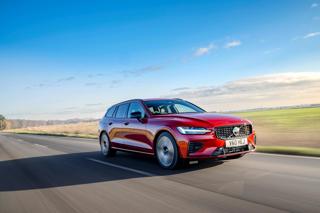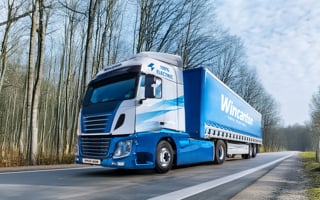Volvo Car Corporation has taken another step on the journey towards autonomous driving - self-driving vehicles - by demonstrating a new traffic jam assistance system.
The new system, whereby the car automatically follows the vehicle in front in slow-moving queues up to 50 km/h, will be ready for production in 2014.
"This technology makes driving more relaxed in the kind of monotonous queuing that is a less attractive part of daily driving in urban areas. It offers you a safe, effortless drive in slow traffic," said Peter Mertens, senior vice president research and development of Volvo Car Corporation.
The traffic jam assistance function is an evolution of the current Adaptive Cruise Control and Lane Keeping Aid technology, which was introduced in the all-new new Volvo V40 hatchback earlier in 2012.
The driver activates the traffic jam assistance function by pushing a button. When active, the engine, brakes and steering respond automatically. The Adaptive Cruise Control enables safe, comfortable driving by automatically maintaining a set gap to the vehicle in front, at the same time as the steering is also controlled.
"The car follows the vehicle in front in the same lane. However, it is always the driver who is in charge. He or she can take back control of the car at any time," explained Mertens.
Autonomous driving - with steering, acceleration and/or braking automatically controlled by a vehicle that requires very little human interaction - is a major focus area in Volvo Car Corporation's development work.
"Our aim is to gain leadership in the field of autonomous driving by moving beyond concepts and pioneering technologies that will reach actual customers. Making these features reliable and easy to use is crucial to boosting customer confidence in self-driving cars," said Mertens.
The low-speed traffic jam assistance system is the second technology for autonomous driving recently presented by Volvo Car Corporation. A few weeks ago, the company demonstrated the SARTRE project (Safe Road Trains for the Environment), which focuses on platooning in highway and motorway traffic at speeds of up to 90 km/h.
In 2011, Volvo Car Corporation invited a number of premium car owners to evaluate future driver support technologies at the company's test track, including an early traffic jam assistance prototype. One of the guests said: "A perfect support for making commuting less stressful. It will take away the cramps and knee pain that I get when constantly having to adjust speed and distance in slow-moving queues. "
The traffic jam assistance technology will be part of Volvo Car Corporation's new Scalable Product Architecture, SPA, which will be introduced in 2014.
"SPA is a stand-alone Volvo project that will enable us to take the company's technological future into our own hands. Most of our volume will be based on this new architecture. It will give us a high degree of commonality and the right scale of economy to be competitive in the future," concluded Mertens.



















Login to comment
Comments
No comments have been made yet.